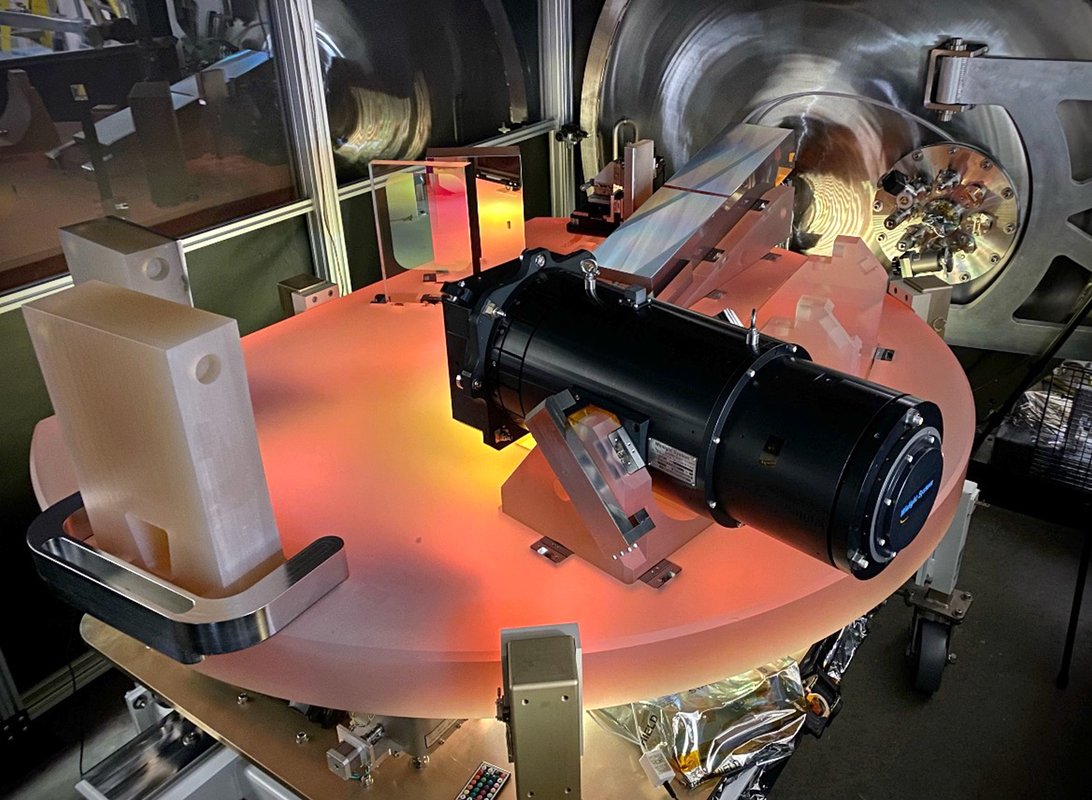There’s a new planet hunter in town, and it’s got its sights set on nearby Earth-sized planets in the galactic neighborhood.
Dubbed the Keck Planet Finder, or KPF for short, the new instrument at the W. M. Keck Observatory in Hawaii achieved first light on November 9 by taking a light spectrum of the planet Jupiter. Of course, KPF is designed to find planets in other solar systems, so the data from Jupiter was just a first step – a test run of the instrument’s capabilities. KPF is just getting started.

KPF finds planets using the radial velocity method, which means it observes the ‘wobble’ of a star as it is tugged gravitationally by any planets that might be orbiting it. This method is especially useful for determining a planet’s mass with accuracy: the larger the mass, the bigger the wobble. Other planet-finding missions, like the Kepler Space Telescope, observe planets using the transit method. They watch the light from a star grow dimmer as a planet passes in front of it. The transit method gives accurate information about a planet’s diameter. If you want to know a planet’s density, you’ll need to know both measurements (diameter and mass). For this reason, KPF will be used to compare notes with Kepler data and other transit telescopes. Together, the transit method and the radial velocity method paint a fuller picture of the composition and conditions of distant exoplanets, which they could not do alone.
KPF hopes to find new planets too, especially smaller, rocky worlds orbiting close to their stars. It is more sensitive than the Keck Observatory’s previous planter finder (the High-Resolution Echelle Spectrometer, or HIRES), aided in part by the use of a ceramic-glass hybrid material called Zerodur for its base and optical components. The material doesn’t expand or contract with temperature changes, meaning there are fewer false signals picked up by KPF. While HIRES could detect the wobble of a star at a speed of 200 centimeters per second, KPF can do so at 30 centimeters per second. As Andrew Howard, KPF’s principal investigator puts it, “We’re measuring a motion that is slower than a human walking. And the stars are light-years away and 100 times larger than the entire Earth.” It’s an impressive feat.

There are limitations, of course. KPF will be best suited for observing planets around dim stars like red dwarfs, rather than Sun-like stars. These stars have habitable zones much closer in than that of our Sun, but are often considered less suitable for life due to the higher solar flare activity usually found in that type of star.
Nonetheless, the team is excited to study extremely small rocky worlds close to their stars, as well as planets with odd orbits and high inclinations that travel over the poles of their stars. One of the first undertakings will be to aim KPF at the 50 nearest stars to Earth, searching for planets in our own local neighborhood.
After observing Jupiter on Wednesday night, KPF turned its gaze to other star systems for the first time. It will continue its commissioning phase for the next several months, and go into primary operations in the spring. When it does, it is sure to reveal details of intriguing new planets, some of which may even be candidates for direct observation by the James Webb Space Telescope or next-generation ground-based telescopes.
Learn More: Whitney Clavin, “Keck Observatory’s Newest Planet Hunter Puts Its Eye on the Sky.” CalTech
Featured Image: KPF’s Zerodur optical bench. Credit: Jerry Edelstein and the KPF team.

